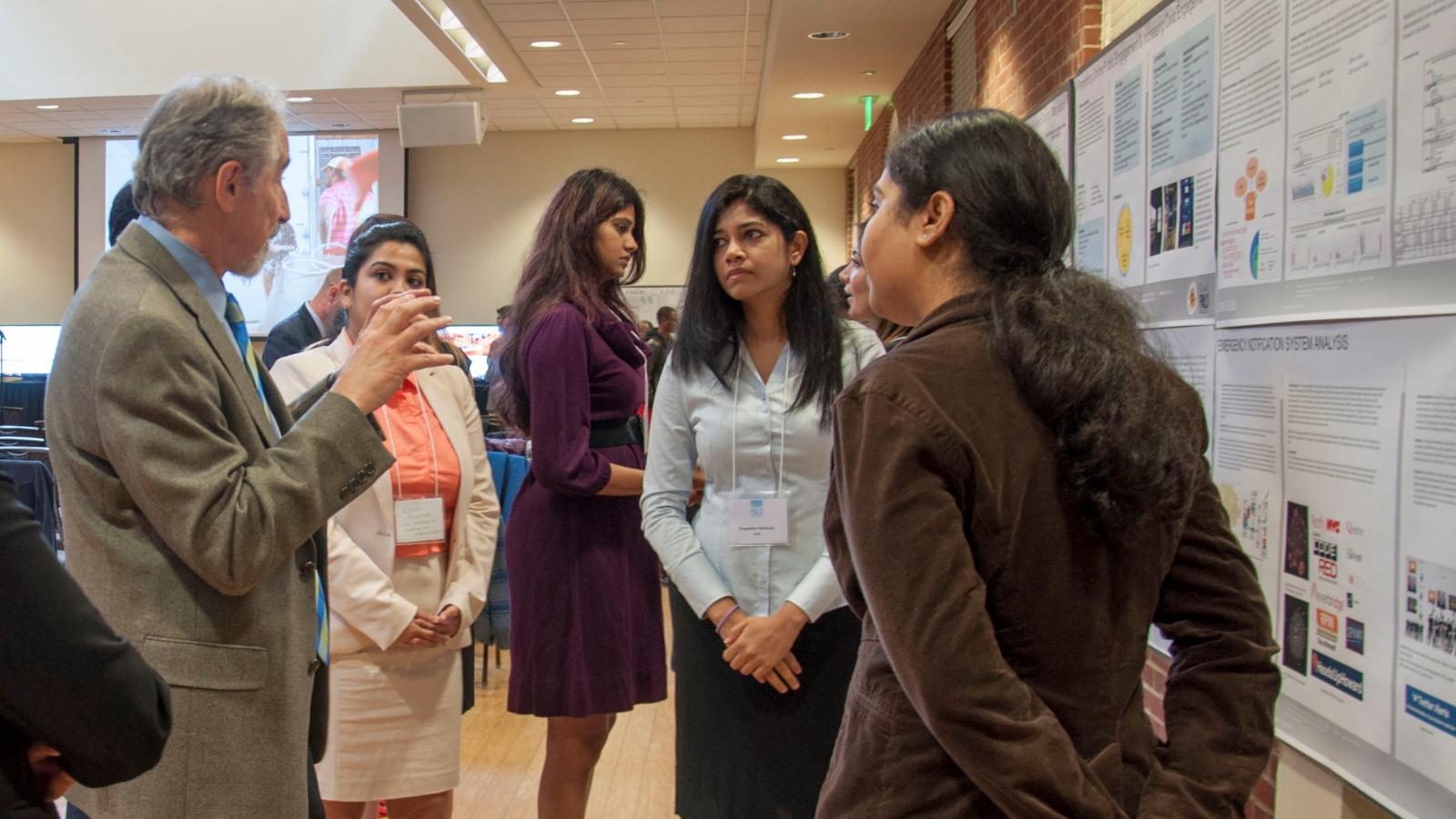2017-18 roster focuses on quality of life in State’s biggest Counties
COLLEGE PARK, Md.— The University of Maryland’s Partnership for Action Learning in Sustainability Program (PALS) released its 2017-18 project roster for its seventh community partnership, this time with the Washington, D.C. suburban counties of Montgomery and Prince’s George’s, the two most populous counties in the state. Twenty-seven projects—17 for Montgomery and 10 for Prince George’s—make up the diverse and ambitious project roster, and range from analyzing community assets along the new Purple Line, to integrating technology into park use, to mapping safe routes to school. PALS will enlist the work of nine colleges, schools and programs on campus this year, including two newcomers: The University of Maryland Francis King Carey School of Law in Baltimore and the Environmental Science and Policy program in College Park.
“These mature counties with leading edge programs have challenged us to match their needs with more specialized and sophisticated projects than before” said Uri Avin, PALS Director.
Developed by the university’s National Center for Smart Growth, PALS pairs faculty expertise with student ingenuity to tackle sustainability issues facing Maryland communities. PALS partners with one or two communities each academic year, matching customized coursework with the specific challenges described by the partner community to deliver research and recommendations on a host of sustainability challenges. With its on-the-ground civic engagement, PALS coursework provides a living case study for students, offering a rewarding community experience that best mirrors future professional interactions within their disciplines.
Building on Results
PALS initiated its first partnership with The City of Frederick, Md., in September of 2014, adding a second, smaller collaboration with College Park in January 2015 and launched its third partnership with Howard County, Md., and the Columbia Association (CA) in September 2015. Last year, PALS engaged Anne Arundel County and the City of Annapolis, the first time the program partnered with both a city and host county concurrently. It was also the first year PALS coursework became eligible to fulfill the Scholarship in Practice requirement for all undergraduates.
“This was a collaborative effort that spans every aspect of Anne Arundel County,” said Anne Arundel County Executive Steve Schuh at a student presentation in Annapolis last year. “The work these students have done is top notch and they did it in a very short period of time. I think their fresh eyes on some very old problems really paid off.”
Smaller collaborations with community partnerships in Baltimore helped create real estate development feasibility analyses for several SW Baltimore sites and built databases that map key features such as job opportunities, vacant housing and vehicle ownership. PALS manager Kim Fisher expects to see continued work in both Baltimore and College Park, in addition to some ongoing projects in Montgomery and Prince George’s Counties.
“PALS continues to exemplify the best of the university's sustainability programs,” said Mark Stewart, Director of the Office of Sustainability. “There's nothing better than seeing our students hone their sustainability and project management skills by developing real solutions for real communities.”
PALS 2017-18: By the Numbers
- 27 projects (17 for Montgomery County, 10 for Prince George’s County), with 14 dedicated to MNCPPC Parks
- 9 colleges, schools and programs, including newcomers UMD Law in Baltimore and Environmental Science and Policy.
- 15 faculty (4 new to PALS)
Energizing Health and Wellness
While the projects cover the gamut of sustainability issues, over half of the 27 projects this year focus on social and health sustainability issues, examining assets like parks and recreation, schools and community engagement. Of the 17 projects in Montgomery County, 14 address strategies for improving county parks and recreation facilities, including concepts for community gardens, wellness initiatives, expanding minority outreach and standardizing specifications for greywater use.
As Smart Growth turns 20, PALS reinforces commitment to sustainability
The mission of PALS is to help communities improve their quality of life through the vast resources available at the university. PALS was initiated by Dr. Gerrit-Jan Knaap, director of the university’s National Center for Smart Growth, in response to two very distinct—yet interconnected—issues: a lack of “real world” experiential opportunities for students to practice classroom skills, and the struggle local governments face with dwindling budgets, overburdened staff and mounting sustainability issues. Through interdisciplinary and cross-community collaboration, the PALS program represents an integral part of the university’s land grant mission to create a more sustainable Maryland. Several PALS projects are now actually being implemented, a tangible sign of NCSG’s effect on smart growth, initiated in Maryland 20 years ago.
“Twenty years ago, we put NCSG on the map with our fervent resolve to work with stakeholders across the state to create thriving, equitable, sustainable communities,” says Knaap. “PALS is an integral part of that continued mission, and has helped push the notion forward in new and exciting ways.”
Learn more about PALS here.

